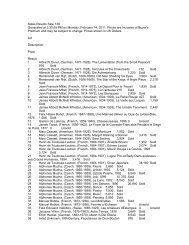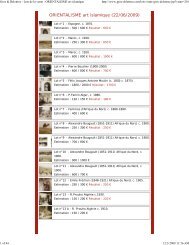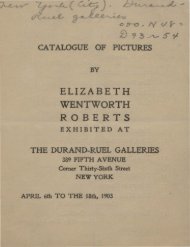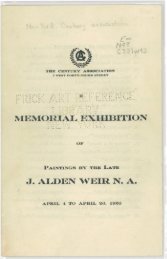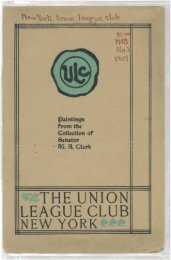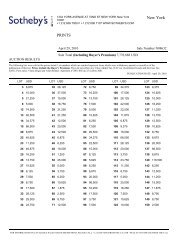Shepherds of the black-headed people - New York Art Resources ...
Shepherds of the black-headed people - New York Art Resources ...
Shepherds of the black-headed people - New York Art Resources ...
- No tags were found...
Create successful ePaper yourself
Turn your PDF publications into a flip-book with our unique Google optimized e-Paper software.
The city and <strong>the</strong> palace at archaic UrWal<strong>the</strong>r Sallaberger, Ludwig-Maximilian-Universität MünchenAbstractThis paper takes up <strong>the</strong> issue <strong>of</strong> <strong>the</strong> archaic texts <strong>of</strong> Ur (cca. 3000 – 2700B.C.). Throughout <strong>the</strong> whole group, <strong>the</strong> same features are displayed by<strong>the</strong>ir orthography, metrology, prosopography and terminology in spite <strong>of</strong><strong>the</strong>ir divergent findspots, showing thus <strong>the</strong> fact that <strong>the</strong>y must have comeinto being throughout a relatively short period <strong>of</strong> time. The texts showthat <strong>the</strong> administration <strong>of</strong> this Sumerian city included a) <strong>the</strong> king in itsinner quarter, responsible for political decisions for state, palaceeconomy and palace goods; b) <strong>the</strong> royal quarter, AB, which managed <strong>the</strong>city state, especially its agricultural products and cared for <strong>the</strong> upkeep <strong>of</strong><strong>people</strong> attached to it (bread and beer texts), and c) <strong>the</strong> city <strong>of</strong> Ur andsmaller hinterland settlements <strong>of</strong> <strong>the</strong> city state under <strong>the</strong>ir respectiveensi 2 's, managed by <strong>the</strong> royal quarter with recourse to <strong>the</strong> agriculturalenterprise, but autonomous as political entities.Keywords: History <strong>of</strong> ancient Mesopotamia, Early Dynastic period,Sumer, Ur, cuneiform texts, king, city.In studies <strong>of</strong> <strong>the</strong> ancient history <strong>of</strong> Mesopotamia, we usuallyconcentrate our attention on <strong>the</strong> figure <strong>of</strong> <strong>the</strong> ruler, in accordancewith his prominence in <strong>the</strong> sources. Ancient rulers were, <strong>of</strong> course,depicted in works <strong>of</strong> art but, frankly speaking, <strong>the</strong> knowledge <strong>of</strong>political history is denied to us. This is so because most <strong>of</strong> our textsbelong to <strong>the</strong> sphere <strong>of</strong> administration, not <strong>of</strong> politics.Things being as <strong>the</strong>y are, we may seek a certain guiding principle in<strong>the</strong> sovereigns’ titles and his residence, <strong>the</strong> 'palace'. For <strong>the</strong> mostancient period, <strong>the</strong>se may be subsumed as follows:Uruk IV (late fourth millennium) – en;Uruk III (beginning <strong>of</strong> third millennium)– en, residing in <strong>the</strong>AB (= èš), cf. <strong>the</strong> palace excavated at Jemdet Nasr;Fara/ED IIIa (cca. 26 th century B.C.) – énsi(-GAR), lugal, é-gal.Fara seems to have constituted a member <strong>of</strong> a confederacy under<strong>the</strong> sway <strong>of</strong> <strong>the</strong> king <strong>of</strong> Kiš, a lugal who disposed <strong>of</strong> his own é-gal.31



